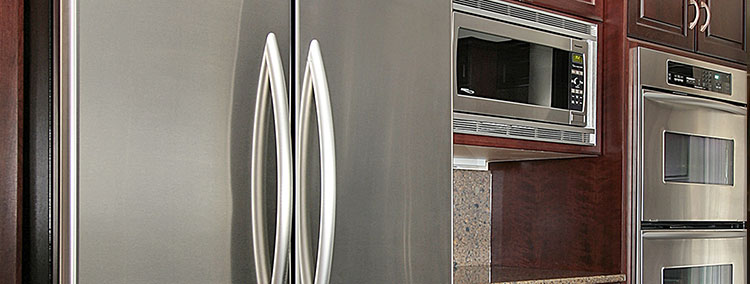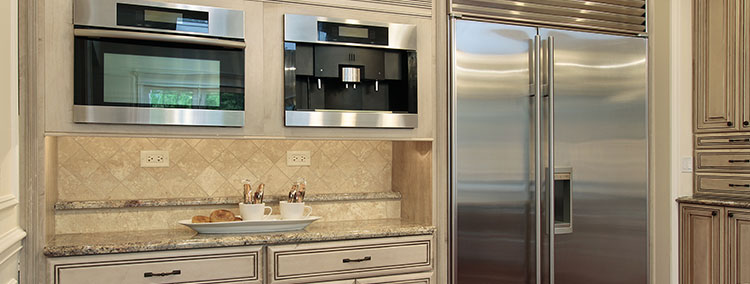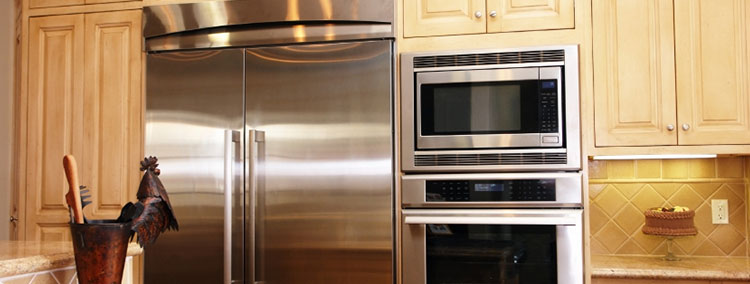The refrigerator is one of the most hardworking appliances at home, and you should make yours function efficiently and better so that you get ultra cold food and save money on your energy bills. How do you make your fridge function better? There are plenty of ways as given by appliance repair professionals.
These ways include:
Keep the temperatures at 37 degrees Fahrenheit
To keep your appliance functioning optimally and protect the food from spoiling, keep your refrigerator temperature at 37 degrees Fahrenheit.
This calls you to regularly test the temperature of your appliance and set it accordingly.
To test the temperature of your appliance, place a thermometer in a glass of water and check the next day.
The freezer should always be at zero degrees Fahrenheit and to test the temperature, you need to place the thermometer between the frozen foods and then check the temperature after 8 hours.
To save even more money, set the fridge temperature to as high as 40 degrees Fahrenheit and the freezer at 5 degrees Fahrenheit.
Remove items from the top of the fridge.
The top of the fridge might seem like an ideal place to store the cereal boxes and other junk, but it isn’t. The reason for this is that placing items here increases the chances of heat getting blocked from escaping, and as a consequence, the compressor works harder than it should; hence you always have a high electric bill at the end of the month.
An overworking appliance also has a short lifespan, so when you repeatedly place items on your fridge, you increase the chances of the appliance breaking down and have to buy a new one.
Ensure that the door has a good seal
One way to ensure that your fridge is in perfect working order and saving you as much money as possible you need to keep the door closed at all times.
You should note that you can close the door, and still, the cold air escapes, forcing you to pay a high monthly bill. To ensure this doesn’t happen, inspect your door and ensure that it has a good seal. One way to make this possible is to close the door on a piece of paper or dollar bill.
If you cannot do this, adjust the refrigerator gasket or replace it to prevent the cold air from escaping.
Turn off the anti-Sweat heater.
Most refrigerators manufactured after 1993 come with a switch that allows you to choose between exterior energy-saving and moisture-reducing modes.
When you set your fridge to exterior moisture reducing mode, the heater kicks on to keep the condensation off the outside of the refrigerator.
Setting the fridge to energy-saving mode saves 5-10% of energy.
Turn off the anti-sweat heater to save energy and keep your appliance functioning better.
You should note that a newer fridge might have automatic moisture control that eliminates the exterior condensation without needing a heater.
Clean the condenser coils
The condenser coils play a crucial role in keeping the fridge’s insides cool. Unfortunately, over time, they collect a lot of dust, and if you don’t clean them, you damage your unit.
By cleaning the coils, you put less stress on the condenser, consequently extending the life of your fridge.
You can clean the coils yourself but for the best results, let an expert help you.
To avoid injuries, remember to unplug the appliance. Also, use a good quality vacuum or brush to do the cleaning.
Keep the fridge properly organized.
You might have the impression that properly organizing the fridge is just part of good housekeeping, but this isn’t the case as it also plays a vital role in determining how effectively and efficiently the fridge functions.
Besides having an easy time finding the food you need in a properly organized fridge, the condenser works less hard to get the temperature back to the set level, which means a reduced energy bill.
Refrigerator repair Northern VA professionals recommend you remove items from your fridge, remove the items that have expired, then organize the refrigerator according to your preferences.
In addition to keeping your fridge organized, make it a habit to keep it full most of the time.


